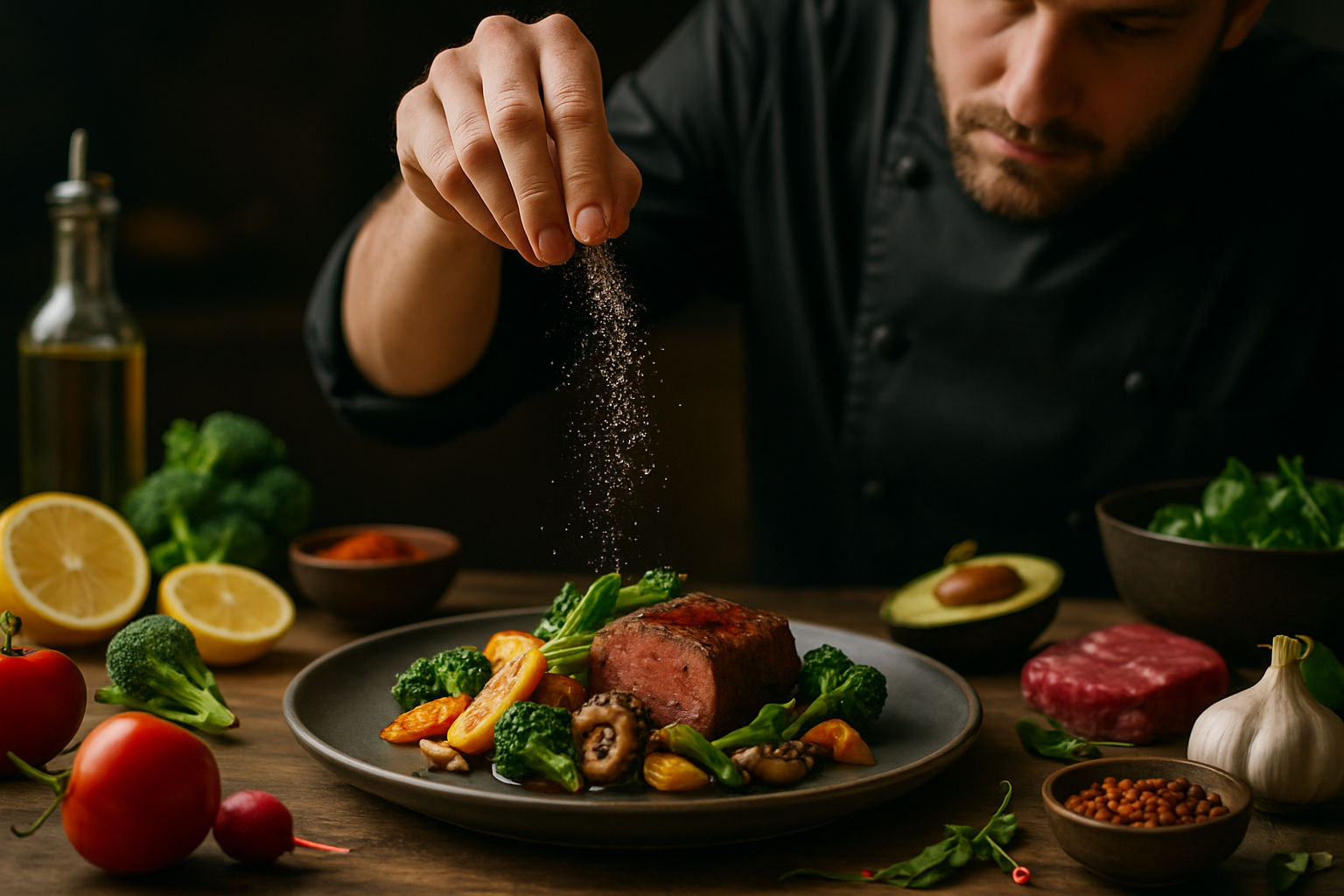Umami Unveiled: The Fifth Taste That's Revolutionizing Cuisine
Discover the depth and complexity of umami, the elusive fifth taste that's captivating chefs and food enthusiasts worldwide. This savory sensation is transforming culinary landscapes, adding richness to dishes, and elevating flavor profiles in unexpected ways. Join us on a journey through the science, history, and culinary applications of umami, and learn how to harness its power in your own kitchen.

The discovery of umami as a distinct taste dates back to 1908 when Japanese chemist Kikunae Ikeda isolated glutamate from kombu seaweed. He noticed that the savory flavor couldn’t be categorized under the four basic tastes known at the time: sweet, sour, salty, and bitter. This groundbreaking revelation led to the recognition of umami as the fifth basic taste, although it took nearly a century for Western scientists to fully acknowledge its existence and importance in gastronomy.
Umami-Rich Ingredients: Nature’s Flavor Enhancers
Umami is present in a wide array of natural ingredients, many of which have been used for centuries to add depth and complexity to dishes. Aged cheeses like Parmesan, cured meats, fermented soy products, and sun-ripened tomatoes are all excellent sources of umami. Mushrooms, particularly shiitake and porcini varieties, are also umami powerhouses. In the seafood world, anchovies, dried bonito flakes, and kombu seaweed are prized for their intense umami profiles.
Understanding these ingredients and their umami potential allows chefs and home cooks to create more balanced and satisfying dishes. By incorporating umami-rich elements into recipes, it’s possible to reduce the need for excessive salt or fat while still achieving a full-bodied flavor. This approach not only enhances taste but can also contribute to healthier cooking practices without sacrificing deliciousness.
Umami in Global Cuisines: A Culinary Journey
Across the globe, different cultures have intuitively harnessed the power of umami in their traditional dishes, often without realizing the scientific basis behind their flavor-building techniques. In Italian cuisine, the combination of Parmesan cheese, tomatoes, and mushrooms in many recipes creates a robust umami foundation. Asian cuisines frequently rely on fermented soy products like soy sauce, miso, and fish sauce to impart depth and complexity to their dishes.
In French cooking, techniques like deglazing with wine and creating rich stocks extract umami compounds from meat and vegetables. The use of worcestershire sauce in British cuisine and the popularity of ketchup in American cooking also demonstrate the universal appeal of umami-rich condiments. By exploring these diverse culinary traditions, we can gain insights into how different cultures have developed unique ways to incorporate and balance umami flavors in their signature dishes.
Umami Synergy: Combining Flavors for Maximum Impact
One of the most exciting aspects of umami is its ability to enhance and amplify other flavors when combined strategically. This phenomenon, known as umami synergy, occurs when different umami-rich ingredients are paired together, creating a flavor impact greater than the sum of its parts. For example, combining tomatoes with mushrooms or adding a sprinkle of Parmesan cheese to a meat dish can significantly boost the overall umami sensation.
Chefs and food scientists are continuously exploring new ways to leverage umami synergy in their creations. This has led to innovative flavor combinations and cooking techniques that push the boundaries of traditional cuisine. By understanding and applying the principles of umami synergy, home cooks can elevate their dishes to restaurant-quality levels, creating memorable dining experiences with relatively simple ingredients and techniques.
Umami in Modern Gastronomy: Trends and Innovations
The growing awareness and appreciation of umami have sparked a wave of culinary innovations and trends. Chefs are experimenting with unconventional sources of umami, such as using koji (a type of fermented rice) to enhance flavors in non-Asian cuisines. Vegetarian and vegan chefs are particularly interested in exploring plant-based umami sources to create satisfying meat-free dishes that don’t compromise on flavor.
In the world of food product development, umami is becoming a key focus. Companies are creating new umami-rich seasonings, condiments, and flavor enhancers to cater to consumers’ growing desire for bold, savory tastes. This trend extends beyond traditional food products, with umami flavors making their way into unexpected categories like cocktails and desserts. As our understanding of umami continues to evolve, we can expect to see even more innovative applications in both professional kitchens and everyday cooking.
Umami Tips & Facts
• Umami taste receptors are found not only on the tongue but also in the stomach.
• MSG (monosodium glutamate) is a concentrated form of umami flavor.
• Breast milk is naturally high in umami compounds, which may explain why humans are drawn to savory flavors.
• Slow cooking and aging processes can increase the umami content in foods.
• Umami can help reduce sodium intake by enhancing perceived saltiness in dishes.
• The umami taste is detected by the same taste receptors that sense sweet flavors.
• Combining different umami-rich ingredients can create a flavor synergy up to eight times more powerful than individual components.
In conclusion, umami has emerged as a game-changer in the culinary world, offering new dimensions of flavor and endless possibilities for innovation. By understanding and harnessing the power of this fifth taste, we can transform our approach to cooking and eating, creating more satisfying and nuanced culinary experiences. Whether you’re a professional chef or a home cook, exploring the world of umami is sure to elevate your culinary creations and deepen your appreciation for the complex interplay of flavors in food.





